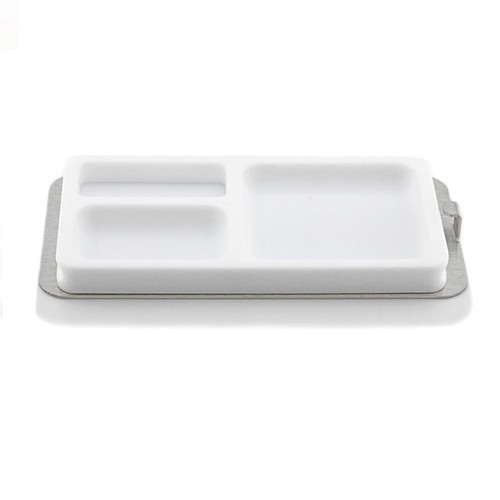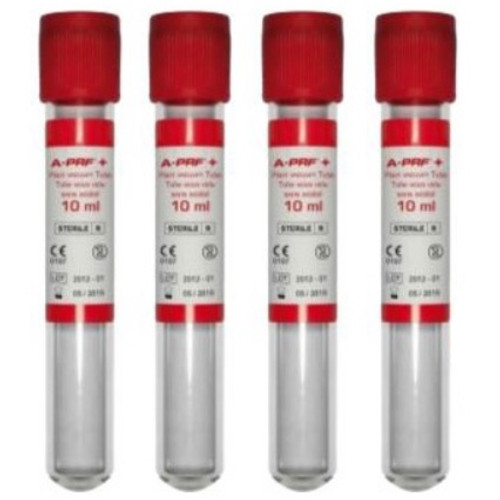- Autoclavable component, made of PTFE (Teflon)
Functions:
- Creating PRF Membranes:
- The tray has separate compartments that serve as molds for fibrin clots
- Placing a clot in a compartment and then using the press plate from the Dr. Choukroun PRF Box on top will flatten the clot into a thin, uniform membrane
- These membranes are then used in various surgical procedures to promote healing
- Making "Sticky Bone":
- One of the most important uses of the membrane tray is for creating "sticky bone"
- This is a composite bone grafting material that is made by mixing bone graft particles with liquid PRF (often called I-PRF or S-PRF) directly in the tray's compartments
- The PRF acts as a natural binder, solidifying and creating a cohesive, moldable, and easy-to-handle graft that improves the predictability of bone regeneration
- Compression Tool:
- The tray can also be used as a compression tool itself
- Its weight helps to flatten and compress the PRF clots in the PRF Box
- Ensures the resulting membranes are of a uniform thickness and consistently release the growth factors and proteins (like vitronectin and fibronectin) contained within the exudate
Benefits:
- The PRF membrane tray is integral to the clinical workflow of PRF procedures, especially in dentistry
- The ability to create different sizes of membranes and to easily mix bone graft materials with liquid PRF simplifies complex regenerative procedures such as:
- Socket preservation after tooth extraction
- Sinus augmentation (sinus lifts)
- Guided bone and tissue regeneration for dental implant placement
- Treatment of periodontal defects
- Because the tray is a sterile, reusable instrument, it provides a consistent and efficient method for preparing autologous biomaterials for use in a variety of regenerative applications







